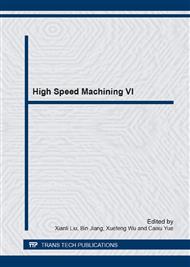p.576
p.580
p.585
p.590
p.596
p.601
p.607
p.613
p.619
The Impact on the Residual Stress Distribution in Continuous Hard Turning GCr15
Abstract:
In this paper, we use the finite element simulation method to create a three-dimensional thermal mechanical coupled model that simulate the distribution of residual stress under condition of hard turning GCr15. And twice consecutive cutting simulation are required, then analysised the influence rule of two consecutive machining on surface residual stress distribution. The simulation results were compared with the experimental values, the results show that the simulated values of continuous cutting was very closed to the experimental values and the simulation results showed a certain reliability, the maximum residual tensile stress value increased significantly as the cutting speed increased.
Info:
Periodical:
Pages:
596-600
Citation:
Online since:
July 2014
Authors:
Price:
Сopyright:
© 2014 Trans Tech Publications Ltd. All Rights Reserved
Share:
Citation:


